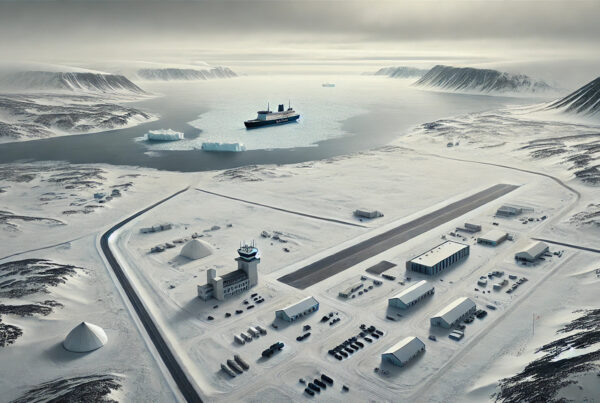Potential problems include icy, remote runways, -35 C temperatures and limits on satellite coverage for the region.

The Liberal government announced on Dec. 19 that Canada would buy 11 remotely piloted aircraft MQ-9B Reaper Drones from Aeronautical Systems, Inc. Photo by General Atomics Aeronautical Systems Inc. /HANDOUT
(Written by David Pugliese. Originally published here in the Ottawa Citizen, republished with permission.)
Canada plans to build a facility for its new drones in the Arctic, but will face more than its share of challenges in operating the aircraft in the far north, air force documents show.
The Liberal government announced on Dec. 19 that Canada would buy 11 of the remotely piloted aircraft from a U.S. company for $2.5 billion.
The new drones will be stationed at 14 Wing Greenwood, N.S., and 19 Wing Comox, B.C.
Original plans called for the drones to have their own forward operating location in the Arctic for two of the aircraft as well as maintenance personnel, Royal Canadian Air Force officers told defence analysts in a September 2022 briefing.
But that has since been changed and the robotic aircraft will now be located as needed at a forward operating base in the Arctic with other Royal Canadian Air Force planes. Those bases will receive new or upgraded hangars as part of efforts to modernize NORAD capabilities.
What hasn’t changed are some of the challenges the drones will face in operating in the far north. Potential problems include icy, remote runways, -35 C temperatures and limits on satellite coverage for the region. The satellites are critical in transmitting flight instructions to the drones as well as for sending surveillance and other data from the aircraft.
“Canada’s environment provides unique challenges,” the briefing pointed out.
Additional challenges centre on the lack of experience among Canadian military personnel in operating larger drones, the documents noted.
The drones will be able to carry different weapons, including 250- and 500-pound bombs as well as “low collateral damage” bombs, according to the briefing on the Remotely Piloted Aircraft System (RPAS) program.
Canada is purchasing the General Atomics MQ-9B Reaper for operations both overseas and domestically. The drones could be used on international missions to conduct surveillance and attack targets, while at home they would have a role on sovereignty patrols, surveillance of large events and gathering information in support of responses to natural disasters, according to the briefing.
The drones were originally expected to be delivered in 2025, but that will be delayed until 2028 as modifications are made to the aircraft to deal with Arctic conditions.
“The need to operate at high northern latitudes, including in the Arctic, requires the use of satellites and aircraft antennas and communication components not previously integrated on the MQ-9,” National Defence spokeswoman Andrée-Anne Poulin explained in a previous email. “Similarly, additional testing and qualification work will be required to ensure the RPAS can be operated and maintained in Canadian climatic conditions.”
Poulin said extra time was also needed so Canadian-made systems could be integrated into the drones.
Uplands will also be the site for a new $65-million military facility to control the drone fleet.
The Ottawa installation, to be ready by 2028, will be around 6,000 square metres in size. It will be home to almost 200 military personnel whose job will be to operate and control the drones flying from the bases in British Columbia and Nova Scotia as well as Arctic locations.
The Canadian Forces and National Defence originally claimed to the Ottawa Citizen that the location in Ottawa for the new building was secret for security reasons.
But that information was false. National Defence outlined details about the Uplands location in publicly available documents that are online. The department also held public consultations on the Uplands location as part of its environmental assessment for the site, government documents show.
The publicly available records outline the construction of the building as well as a parking lot for employees who will work at the Uplands site.
The documents indicate that the proposed size of the facility has increased. It was originally envisioned as a 4,000-square-metre building, according to the records, but will now be around 6,000 square metres.
The new building will house six stations to control the drones and two simulators to support operations. It will accommodate 198 personnel.
It is not clear why the RCAF and National Defence tried to mislead the Ottawa Citizen with false information.
David Pugliese is an award-winning journalist covering Canadian Forces and military issues in Canada. To support his work, subscribe: ottawacitizen.com/subscribe








